Moving seamlessly between film and television, acting, writing, directing and producing, STEPHEN MERCHANT is a creative force who has been entertaining us for years. Perhaps best known as producer, director and writer for the long-running hit series “The Office”, Merchant also displayed his multiple talents wearing the hats of producer/director/writer and star of the hilarious “Hello, Ladies” series, as well as serving as writer for “Life’s Too Short”, “The Ricky Gervais Show”, “Kontoret” and currently, “Kontorri”. He has also directed multiple episodes of other episodic television shows “Extras” and “Life’s Too Short”, while still finding time to act in films like “Logan”, “Tooth Fairy” and “Table 19”, and delighting us with his voice talents in animated films “Gnomeo & Juliet” and “Sherlock Gnomes.” And now, Stephen ups the ante writing and directing his second feature film, FIGHTING WITH MY FAMILY.
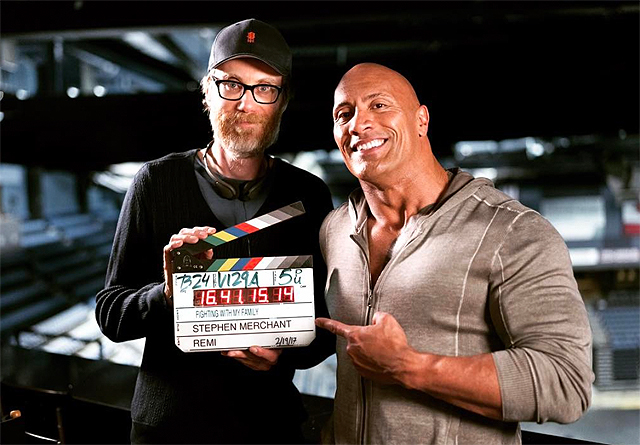
Boasting a cast that includes Florence Pugh as WWE Superstar Paige, Jack Lowden as her brother and fellow wrestler Zak Knight, Nick Frost as dad “Rowdy” Ricky Knight and Len Headey as mom Julia Knight, Vince Vaughn as Coach Hutch, as well as Dwayne “The Rock” Johnson playing himself and serving as the film’s Executive Producer, FIGHTING WITH MY FAMILY is not typically the first film that would come to mind to be written and helmed by Stephen Merchant, a writer and director known best for his laugh-out-loud funny comedy stylings. This is a film filled with heart and drama, and yes, plenty of humor too thanks to Merchant’s wry wit and willingness to allow humor to unfold through a situation or individual as opposed to being forced for a laugh. Focusing on the close-knit Knight family and the rise of Saraya Knight aka WWE Superstar Paige from local wrestler in Norwich, England to two-time WWE Divas champion, from script to screen, Merchant delivers. The story is well told, characters fully fleshed out and well developed; and dare I say, the entire Knight family are incredible characters both on and off screen. Each is tapestried and colorful. The heart in this story is beyond genuine. There is never a false moment of emotion within the Knight family. And as if Merchant’s story construct isn’t enough excellence, one look at the visual design and visual tonal bandwidth created by Merchant and his cinematographer Remi Adefarasin shows Merchant’s deft and skill with visual storytelling and metaphor. Cinematography is top-notch, melding distinct looks between the different worlds of Norwich, Florida and the glitz of Wrestlemania. We feel the claustrophobia of Norwich, the blinding brightness of Florida as Paige comes to America to train for the WWE, and of course the bold, polished glitz and glamour of Wrestlemania, all adding layers to the story of this young “fish out of water” who is coming into her own.
I spoke with Stephen at length about the making of FIGHTING WITH MY FAMILY; the inception of the film, the cinematography and visual design, capturing the authenticity of the wrestling world both at the local levels and on the grand scale of WWE, filling the film with the heart of the Knight family, and the challenge of editing. During our conversation, Stephen proved to be affable, humble, articulate, passionate and, of course, funny, as we talked about FIGHTING WITH MY FAMILY. . .
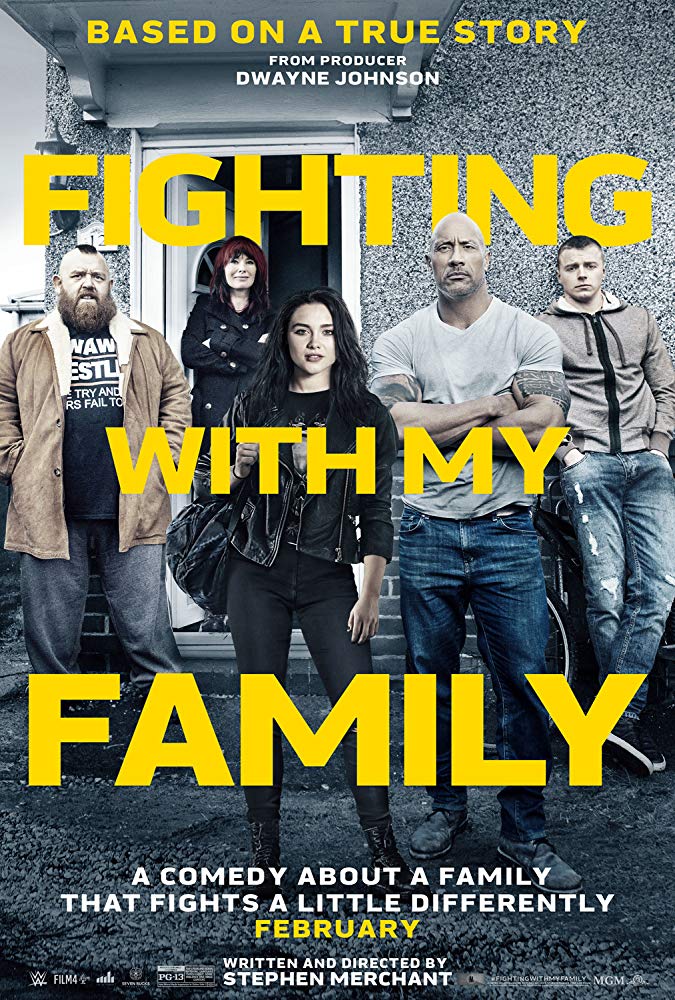
Your second feature directorial. FIGHTING WITH MY FAMILY. I am in love with this film, Stephen. You deliver on every single level, from script to screen. Your character development is fully tapestried all the way down to your supporting characters, who may not have a lot of dialogue, like the kids that Zak teaches and coaches, but there’s the attention to hair, clothes, teenage accoutrement. You have touched everything. And it all comes together in a perfect package.
That’s brilliant! Thank you. Wow! That’s high praise. I feel like we should end the call right there!

What made you the guy to tell this story, and then your decision to bring in your incredible cinematographer, because I’ve got to tell you, your metaphoric visual storytelling here is off the charts with the worlds you create from Norwich to Florida to WrestleMania. And it all melds perfectly. So I’m curious, what made you the right guy to tell Paige’s story, and your teaming up with Remi [Adefarasin], and how the two of you then went on this visual journey?
Oh, great. Thank you. Well, I think if you had said to me, “Do you want to make a movie about wrestling?” I wouldn’t have been the go-to guy. I don’t know anything about wrestling, or I certainly didn’t when I began this project, and it was not something I grew up watching, I never followed it. As you may know, it began as a live documentary that was on British TV, and it wasn’t seen by me. It was seen by Dwayne “The Rock” Johnson. I know Dwayne ’cause we did a movie together some years ago called “Tooth Fairy.” I knew him back in the days when he was still in shape. [laughing] And he saw the documentary. He very much responded to it because he’s from a wrestling family himself, and really related to this family. And he sent me the documentary because he was looking for a British voice to write a script. And I sat down, if I’m honest, a little bit kind of, uh, rolling my eyes, “do I wanna see something about wrestling”, and just completely fell in love with this family. Loved the dynamic. I loved the relationship they have with one another and with wrestling, and this family dream of getting the kids into WWE, and the fact that only the daughter Paige got signed, the brother that was left behind. It just seemed very rich. There was a lot of meat on the bone, storywise. The sibling relationship, the family dynamic, these dreams and ambitions, this girl who felt like an outsider, the brother left behind who has to sort of deal with that rejection, it just felt like it had a lot of interesting themes, and the family themselves were so vivid, and so kind of alive as characters right off the bat that I knew that that would be something interesting to explore. I went to meet the family and it was only in meeting them, really, and getting to know them, speaking to them, finding out there were a second and third act to their story really, that the documentary hadn’t covered, that I sort of really jumped on board.
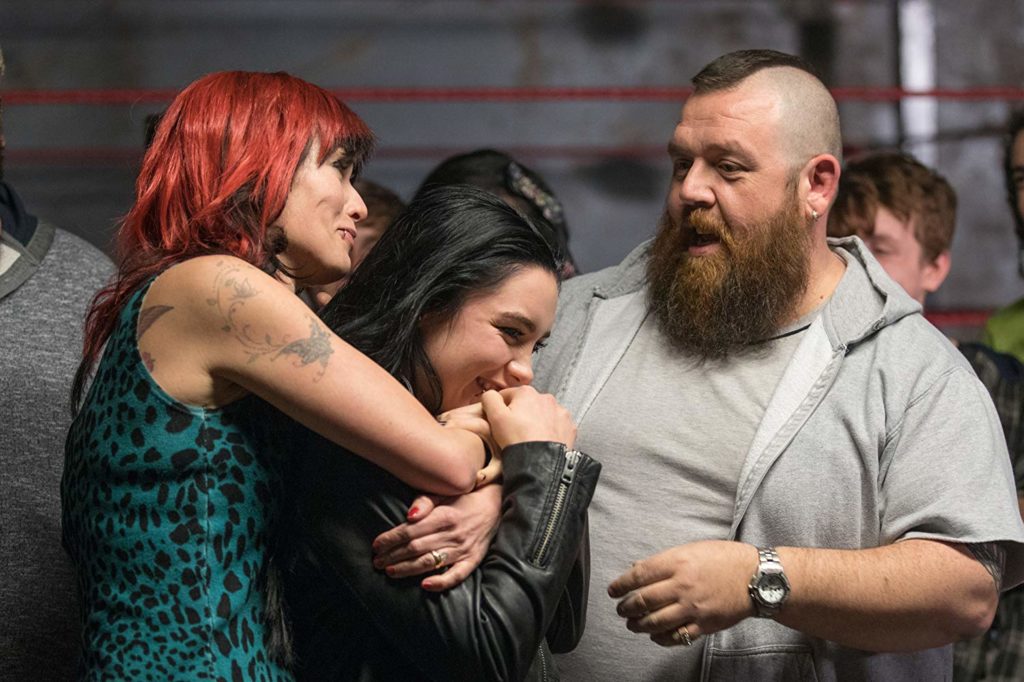
And in a way, there could have been a version of this film in which we’d shot it sort of in a gritty documentary style, but I thought to myself, well then you may as well watch the documentary. It’s not often you get presented with a kind of Rocky-style underdog story, just from true life that’s kinda sitting there, and so I wanted to give it a bit of a Hollywood scale and some sheen and some size, but not lose the authenticity of the family and the world they came from. I had worked with Remi, the DP, before and we’d got on. We talked and in our minds, we kept thinking about, this is a girl who leaves this tiny world of Norwich, this small town in England. That’s the only world she’s ever really known. And she lands in Florida. It’s America. And it’s bigger and it’s brighter and it’s brasher and the skies are bluer and the sun is hotter. And in our minds we kept thinking of it like Dorothy landing in Oz. If Paige begins in the black and white homestead of Norwich, when she lands in America it suddenly springs into Technicolor. So we really kind of were looking for the rich blue skies, and just that kind of glow, which was my experience of going to America for the first time when I was younger. My first American scene I visited was LA. The sky seemed to go on forever, the colors were more vivid, everything just felt bigger and louder and more intimidating. So that was sort of the kind of working model that Remi and I took; that Norwich would have a slightly more claustrophobic, little grayer feel and America would seem brighter and brasher and bolder, but that even in all that color and sort of glamor as it were, this girl would still feel very isolated and very alone. Meanwhile Norwich, which on the surface, as you know, is a very small and rough-and-ready town, but that would actually feel cozy so you got a sense of the world that she left behind, the home that she’d left behind. And off we went, really.
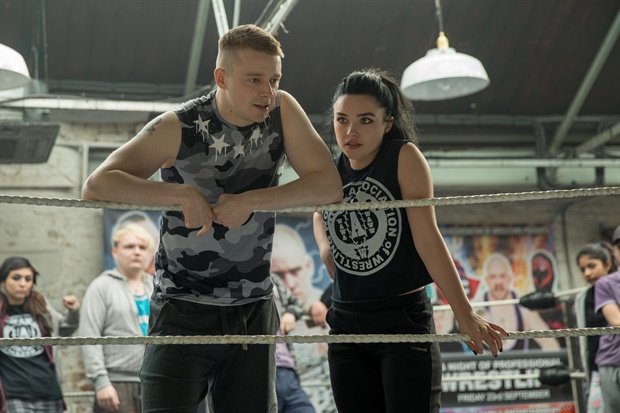
I’m thrilled to hear you say that. Just looking at my notes from the night I screened the film as I’m now listening to you, that was one of the big things, the claustrophobia of Norwich, but also the intimacy that we get within the family dynamic. Your framing of your shots is much more intimate for everything that’s shot in Norwich. And then we go to Florida, and immediately when she comes out on the rooftop pool area, it’s like blinded by the light. What you and Remi do with the reflection off the water in the pool; and it actually looks like you overlit to really bombard her with that first look. Gorgeous. Then you go into the glitz of WrestleMania with the purples and the reds and the blacks, but also a ceiling that reaches to the sky and the metaphor of your dreams are whatever you wanna make them to be. There is no limit. every single segment, you guys hit it on the head, Stephen. Just beautiful.
Oh, that’s amazing, that’s huge praise, thank you. ‘Cause that was certainly the intention we had, quite literally. We created the real home. We went to visit the house that the family lives in and we tried to recreate it as best we could and the sense of being in that house. It is very claustrophobic and small. A council house. But that it’s always full of people and it’s kind of alive and it’s filled with clutter, but there’s a warmth to the place, an affection there. That was very much Paige’s experience when she left England. She was living in this little microcosm in which she was very insulated and protected, and suddenly she landed in America and she was this sort of pale-skinned, dark-haired kind of alt-rock goth girl, suddenly confronted by these WWE trainees who were blonde and blue-eyed and kind of the all-American girl. And she felt very much like a misfit and an outsider and so, we kept thinking of her as she’s like in monochrome, she’s in black and white, but she’s in this technicolor world. Just amplify her sense of isolation and feeling alone.

And of course in Florida you keep at least part of that isolation with the apartment that she lives in, which is very sparse and you have some beautiful, beautiful shadowing in there of sun setting, and then she’s partially seen in a dark gray tinge over her. Really added another whole layer.
I always think what’s interesting is what one dreams of. I think when you’re British, I think you dream of America as this place of great opportunity and vibrancy and color, and it is all of those things. And yet, even if you land in a kind of paradise of blue skies and 75 degree sunshine, you can feel as cold and as alone as if you’re from gray, rainy Norwich because you don’t have the support network, you haven’t got any friends. So it seemed interesting to us [that] could you still make a character feel very alone and still have the dream, and all the trappings of success in the nice apartment and the bright sunshine, but even within that, there’s something sterile and cold. That was sort of the feel we were going for.
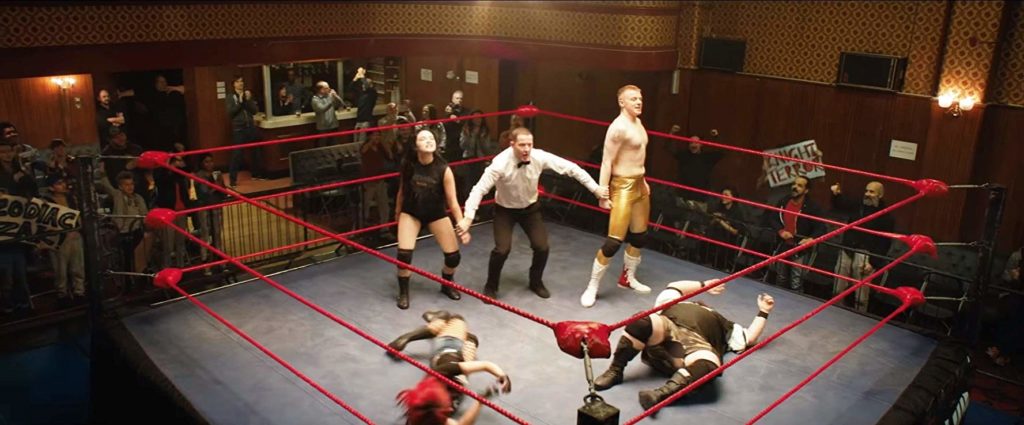
Well, you succeeded. I’m curious about actually lensing the wrestling matches. Because I love how for the Norwich wrestling scenes you use a lot of overhead either crane or drone. Framing is tighter and we really get to see the family all participating, coming in and out of the center of the frame. We get to Florida and we get a lot more of eye-level POV shots, from the mat-level. So I’m curious how you went about developing the different looks you wanted from the actual wrestling standpoint.
To me, the Norwich wrestling should always be kind of rough and ready. The family themselves are very much a DIY, homemade outfit. They put the ring up themselves, they take it down. The ring itself is stuck together with duct tape and it’s a real sort of punk rock, homemade affair. The wrestling itself is a little unrefined and it’s kinda quite rough around the edges and raw. So we wanted to capture that. We wanted a lot of handheld camera, just to kinda really make you feel like you’re in this little world where they threw themselves around and the crowd are very kinda close. And even if there aren’t very many of them, those fans are still very rabid and kind of enthusiastic and sort of put you there in it. When we get to America, we wanted it to start to feel more polished, and more in the way that you see TV wrestling which is shot much more from outside the ring. And it’s a lot more sort of controlled and poised. We used a lot of the actual WWE cameramen because they themselves have a very specific way of shooting and they’re very seasoned. They’re almost left to their own devices to kind of find the best angles. So we tried to give the American wrestling sequences more scale and more of that kind of TV sheen. So you start to be less in the ring with her and started to be feeling more like the TV viewer sort of watching her and judging this girl who’s now trying to make it on this bigger stage.
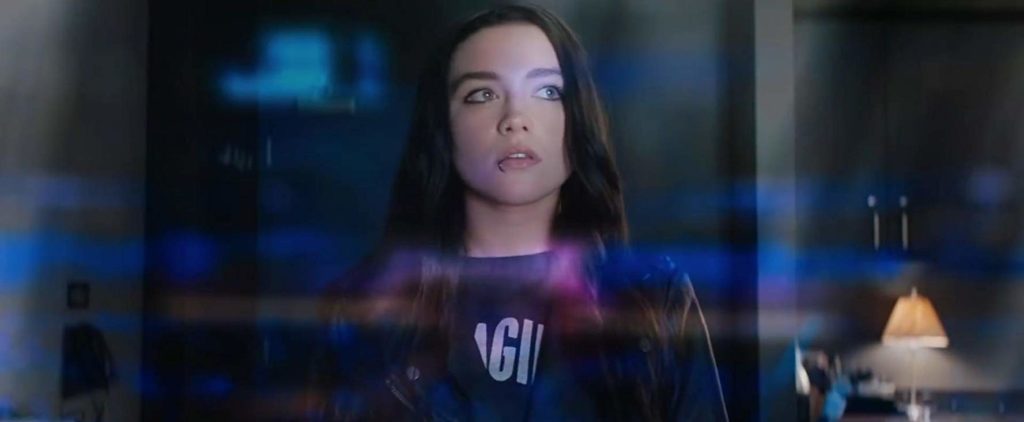
And of course, we get to see the pain on her face so many times when she gets slammed into the mat. And that’s something that we didn’t see in the Norwich sequences. I love that because it really does put us right in there with her, and we’re feeling what Paige feels, her frustration and her pain. These little touches, Stephen, you just nailed them.
That’s very sweet of you, thank you, and a lot of that was, again, a great testament to Florence [Pugh], who plays Paige and who actually did a lot of the wrestling herself. She trained in Florida, where the real girl did, so she could do as much of it as possible. One of the things I learned from both Paige and from Florence and the other wrestlers is that it is, for all of the kind of artifice and sort of make-believe of wrestling, it’s also very tough, it’s very painful. When you slam on that mat, it hurts. There is a lot of real physical endurance and suffering that goes along with wrestling. And that was something we were trying to capture.
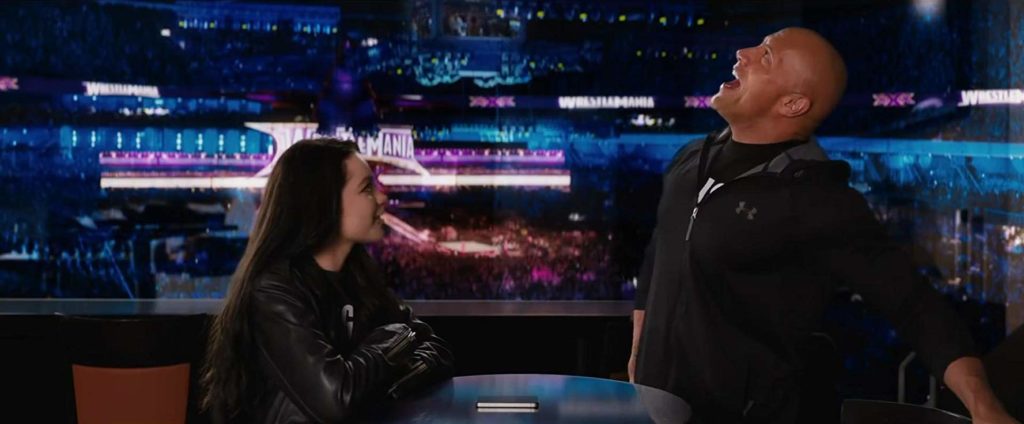
How difficult was your editing process here? You’re walking a fine line of not turning this into a wrestling parody and keeping it honed in on the family aspect. This is a family drama, it’s a girl’s journey, finding herself, and they all just happen to be in the wrestling world. That’s a slippery slope you were walking there.
Well, the first cut of the movie was about two and a half hours long, and the reason it was that long was not because I’d wildly overshot, but because I knew that so much of the tone of the film would be discovered in the editing room. I knew that even though I tried to make a film that was appealing to non-wrestling fans as much as wrestling fans, touchstones for me were movies like “Billy Elliot,” which is not really about ballet, although the boy wants to be a ballet dancer, right? It’s about a boy with a dream. He happens to want to be a ballet dancer. In this movie, Paige happens to want to be a wrestler, and although I didn’t want you to have to understand and appreciate wrestling, I did feel there were sort of information that the non-wrestling audience needed to know in order to understand her journey. So a lot of that original cut was dense with kind of wrestling information so that we could build into the story the information you need to know. Much of the editing process initially was just paring back and refining back to just the kind of the bullet points that you need to know in order to understand because so much of wrestling is not just about the physicality, but it’s about the performance; it’s about can you speak on the mic, can you create a persona, can you win over the crowd. The theater of it is as much the story as the physical side of things. And so a lot of the editing process initially was of that. Then the wrestling sequences themselves were very hard to cut because you want it to feel authentic and you’re trying to disguise when you’ve had to use the stunt double. We shot very fast, so we couldn’t always get every shot that we wanted. So it was a very, very tough film to edit, which I don’t think on the surface perhaps wouldn’t appear that way. It feels very straightforward, I think. But it was a very tricky movie to cut.
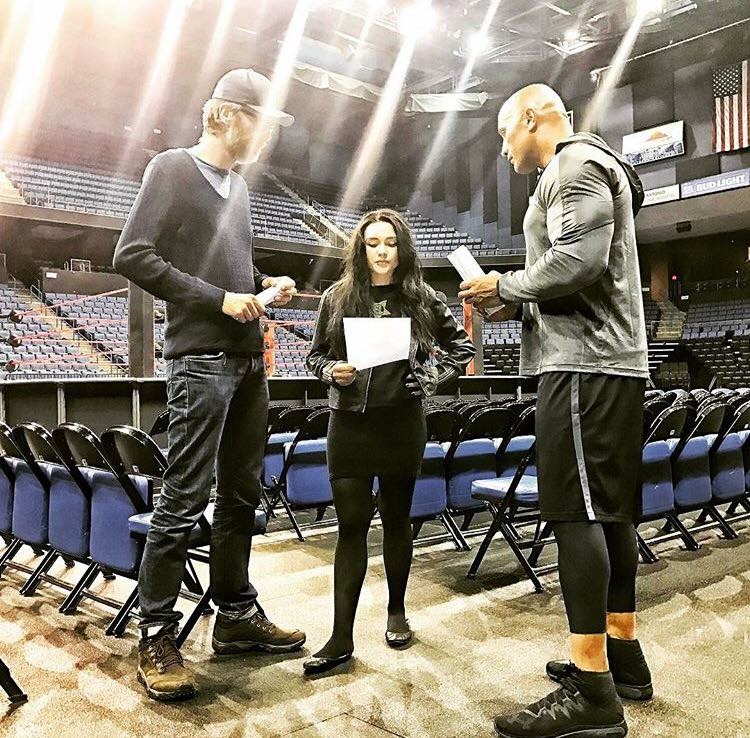
What did you personally learn about yourself as a director in making this film that you can now take forward into your future directorial endeavors?
Well, there’s something which I think has been going hand-in-hand with the more acting which I’ve been doing. I’ve done more and more acting in recent years, and the acting and working with other directors and being an actor has started to started to feed back into my own role as a director. One of the things is I think whenever a scene is not quite working, or you’ve encountered a problem and you’re not quite sure how to solve it, the actors are normally the resource to go to to solve that problem. They are the ones who are seeing the story from a different perspective, they are living it as much as any actor does. And they can normally identify why something’s not quite working. So, certainly in this movie, I’ve embraced the actors more and more and learned from them, and trusted them to kind of guide me through and tell me when something’s not quite feeling right. Something’s not quite feeling authentic. And that’s I think the thing which I really will take forward. I think in the past, I myself have been dismissive like other people have when an actor says, “What’s my motivation, love?” And it’s like, “‘Cause you’re gettin’ paid’.” But actually, the more I act myself, the more I know there’s a legitimacy to that question because sometimes you only know why something’s not right because you’re the actor in the scene. And so I have a lot more faith now, and trust in the actors I think than I did before.
by debbie elias, exclusive interview 02/20/2019












